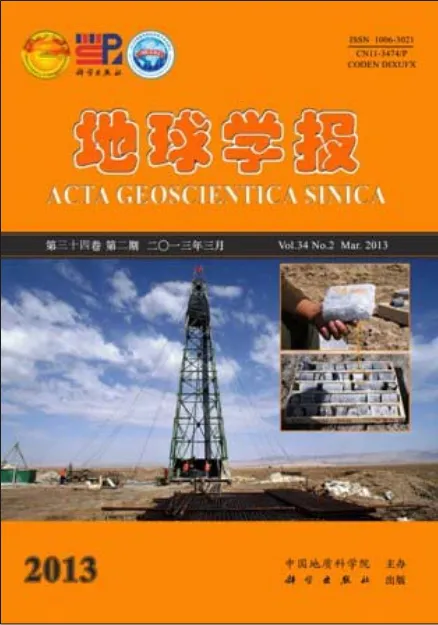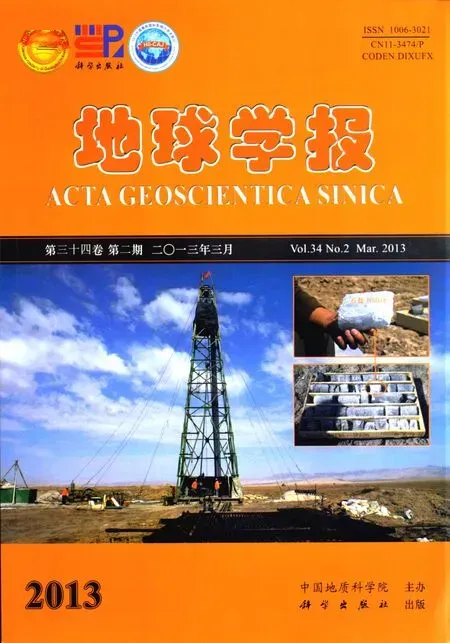封面故事
青海柴达木盆地ZK02钻井现场及深度 343 m处的石盐沉积。通过在柴达木盆地东、西部实施的科学钻探,在东部获得1.17 Ma以来高精度年代学数据和高分辨率古环境记录; 在西部发现第四纪早期发育的 31期冬季风强盛的冷期沉积。研究表明在盆地中部存在西风带/东南季风的界线和成盐突变带,证实东部第四纪天然气的生物成因, 为柴达木盆地资源评价提供重要依据。这项由中国地质科学院矿产资源研究所郑绵平院士主持的研究成果,当选 2012年度中国地质科学院十大科技进展,排名第三。详见本期第129-138页。(图片提供:郑绵平、侯献华)

Cover Story:ZK02 drill hole and halite deposits at the depth of 343 m in the Qaidam Basin, Qinghai Province.Through scientific drilling in the eastern and western parts of the Qaidam Basin, high-precision chronologic data and high-resolution paleoenvironment record were obtained in the eastern part, and 31series of cold deposition events with strong winter wind developed in early Quaternary were discovered in the western part.Researches show that there existed the boundary between the westerlies and the southeast monsoon as well as the abrupt change zone in salt formation and prove that the Quaternary natural gas was of biogenic origin.All these results provide important evidence for the evaluation of resources in the Qaidam Basin.The research achievement led by Academician ZHENG Mian-ping, Institute of Mineral Resources, CAGS, ranks the third among “Top Ten Scientific and Technological Progresses of CAGS in 2012”.For details, see page 129-138 of this issue.(photo by ZHENG Mian-ping and HOU Xian-hua)

